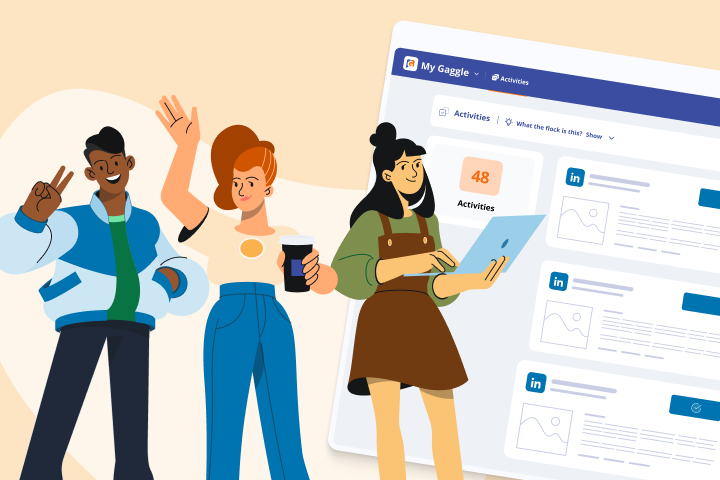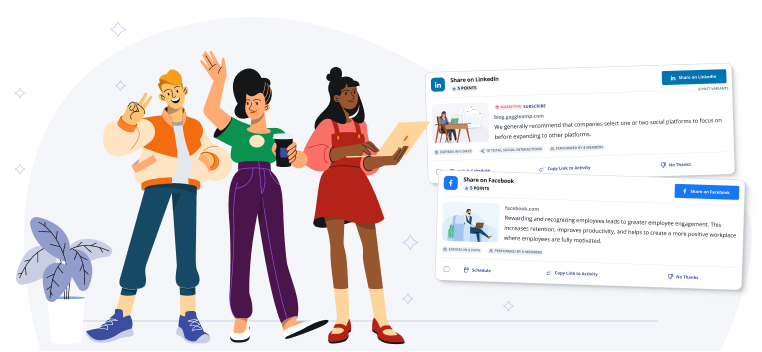Employer Branding Initiatives To Attract Top Talent
The battle for top talent has never been fiercer. In a competitive market, talented employees have many career options. To stand out in their industries and appeal to top talent, companies need to do more than just post job listings. They need to market themselves to prospective candidates, showing them what makes their company unique and a good fit.
So, how do brands market themselves to stand out from the competition? Employer branding.
Employer branding is how current and prospective employees perceive your brand as an employer. A company with a compelling employer brand will stand out in a market where talented candidates have multiple job options. This differentiation is key to attracting top-tier talent and instilling a sense of belonging and loyalty among current employees.
Attracting new talent isn’t the only benefit of strong employer branding. Implementing the right employer branding ideas can boost employee morale and engagement. When employees are proud of where they work, they are more motivated, and their productivity increases.
In this article, we’ll help you craft a strong employer brand. First, we’re going to describe what is the role of employer branding in recruitment along with common employer branding objectives. Then, we’re going to show you how to strengthen your employer branding with effective employer branding initiatives.
Employer Branding in Recruitment
The role of employer branding in recruitment is to shape the perception of the company as an ideal workplace. By integrating employer branding in HR, it makes the recruitment process more efficient and effective.
Implementing employer branding in recruitment helps to attract potential employees who align with the company’s values and culture. Candidates are more likely to apply to a company that aligns with their values and career aspirations.
In fact, a strong employer brand can sway a candidate’s decision when choosing between competing job offers. According to Glassdoor, 86% of employees and job seekers research company reviews and ratings when deciding where to apply for a job.
The Impact of Employer Branding on Jobs
Companies that adeptly incorporate their employer branding strategy into job postings are successful in highlighting unique workplace characteristics such as a collaborative culture, a commitment to employee development, or involvement in innovative projects. This targeted approach is highly effective, as evidenced by the following statistics:
- Application Rates: Companies with strong employer brands experience a 50% increase in qualified applicants.
- Job Seeker Behavior: 75% of job seekers research a company’s reputation and employer brand before applying.
- Impact on Hiring Process: A positive employer brand can reduce the time to hire by up to 2x.
- Employee Retention and Attraction: A well-articulated employer brand, as reflected in job postings, is linked to a 28% reduction in employee turnover.
Now that we know the positive impact that employer branding has on jobs, let’s take a look at some recruitment examples.
Employer Branding in Recruitment Examples
Here are a few examples of excellent employer branding in recruitment.
Cultured South
Cultured South is a great example of a brand conveying its “work hard and have fun” culture through its job posting. The company features its employees in the job posting, giving prospective candidates a peek into who they will be working with.

Source: Cultured South
Apple
In contrast to Cultured South, Apple takes a different approach to its recruitment. In this example, the tech company employs artistic animation and poetic narration to depict itself as an innovative workplace, without focusing on specific policies, perks, or showcasing actual employees.
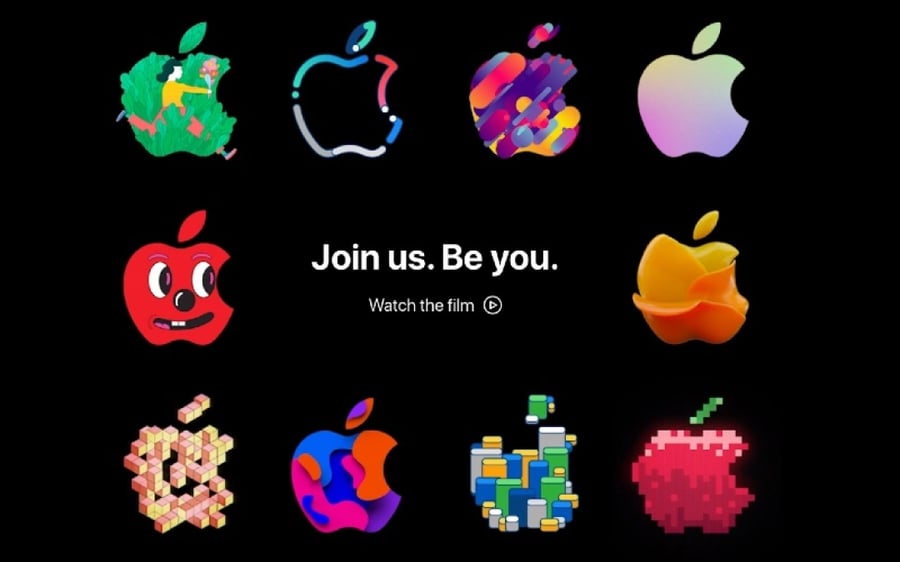
Source: Apple
Teach For America
Teach for America, a non-profit focused on education, assigns teachers to schools in low-income areas. Their career site highlights notable statistics demonstrating prospective teachers' potential impact.

Source: Teach For America
Effective Employer Branding Initiatives
Employer branding initiatives are crucial in defining how a company is perceived as a workplace. These initiatives range from internal strategies to public-facing employer branding campaigns, each contributing to the company's overall image. A comprehensive list of such initiatives must include:
- Developing engaging career pages on the company website.
- Creating employee testimonial videos showcasing workplace culture.
- Conducting and promoting employee satisfaction surveys.
- Hosting and participating in industry events and career fairs.
Improving employer branding means aligning each of the initiatives listed above with the company's core values and effectively communicating its unique employer value proposition (EVP).
For instance, successful employer branding campaigns include sharing behind-the-scenes glimpses of the work environment and employee stories. These campaigns create an authentic and relatable company image and help attract the right candidates.
How To Improve Employer Branding
The right strategies for enhancing (and measuring) the impact of an employer brand can transform how a company is perceived in the competitive job market. Here are some key employer branding initiatives to implement:
-
Crafting Authentic and Consistent Messaging: This involves conveying a genuine and unified message across all channels. The messaging should accurately represent the company's values, culture, and what it is like to work there. Authenticity in messaging builds trust and helps attract candidates who fit the company’s culture well.
-
Employee Engagement and Advocacy: Employees are the most credible ambassadors for a company’s employer brand. Engaging them in branding efforts and encouraging them to share their experiences can enhance the company’s image as a desirable employer. This can be done through employee testimonials and featuring employees in branding materials.
-
Utilizing Digital Platforms for Branding: Digital platforms like LinkedIn are excellent tools for employer branding. They offer a way to showcase the company culture and values dynamically and engagingly. Effective utilization of social media platforms, employed by 84% of organizations, can substantially enhance a company's reach and attractiveness to potential candidates.
-
Measuring the Impact of Employer Branding Efforts: Closely monitoring the efficacy of employer branding strategies is crucial for continuous improvement. This can be done through various metrics such as employee engagement scores, turnover rates, and the quality and quantity of job applicants. Regularly assessing these metrics helps fine-tune the employer branding strategy for better results.
-
Developing an Employer Value Proposition: A strong employer value proposition (EVP) is the starting point of building a strong employer brand. An EVP effectively communicates what the organization stands for, the benefits it offers, and why it is a great workplace. This proposition should reflect the organization's values and culture and resonate with potential and existing employees.
Best Employer Branding Companies
Companies that stand out as leaders in employer branding possess innovative and successful strategies. The best employer brands are masters at creating a positive workplace and effectively broadcasting this image to the external world.
Here are seven key employer branding initiatives that are commonly used by some of the best employer branding companies.
1. Employee Storytelling Campaigns
Many leading companies launch storytelling campaigns where employees share their personal experiences and career growth stories. These initiatives help humanize the brand and provide an authentic glimpse into the company's work environment.
The EFT Group does an excellent job of sharing employee stories and giving credit to employees who go above and beyond like in this example:

Source: EFT Group
2. Brand Ambassador Programs
Brand ambassador programs empower employees to act as employee advocates. Companies leverage their employees' networks to amplify their employer brand by providing them with the tools and platforms to share their experiences.
To encourage employees to participate, Microsoft recognizes its employees’ contributions with its Most Valuable Professional Award. The award recognizes exceptional Microsoft community leaders who contribute significantly through speaking, social media, writing, and online community support.
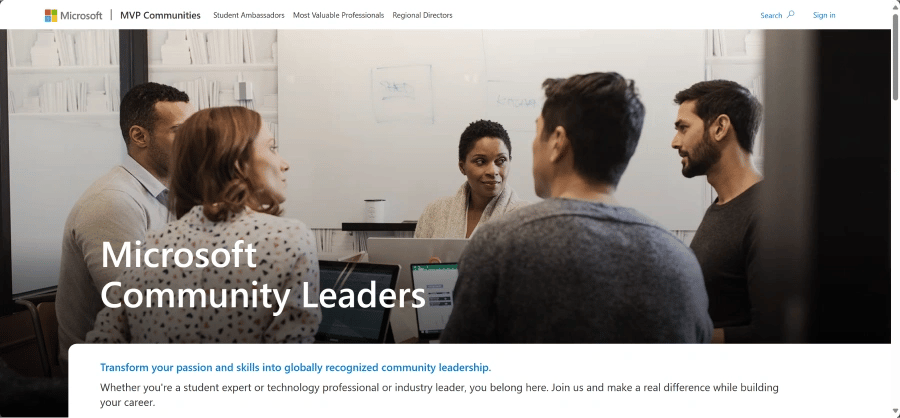
Source: Microsoft
3. Community Engagement and CSR Initiatives
Companies often integrate their corporate social responsibility (CSR) efforts into their employer branding. They showcase their commitment to social values by actively participating in community service and promoting these initiatives, which resonates strongly with current and potential employees.
TOMS is a great example of a company that gives back and participates in community service initiatives.

Source: TOMS
4. Interactive Career Pages
Companies often revamp their career pages to make them more interactive and engaging. This might include virtual office tours and detailed insights into the company culture.
Retailer Zappos is a great example of a brand with an interactive career page. When potential candidates apply for open positions, they have the opportunity to chat with Zappos brand ambassadors. This gives them the chance to ask questions and really get a feel for the position and company culture.
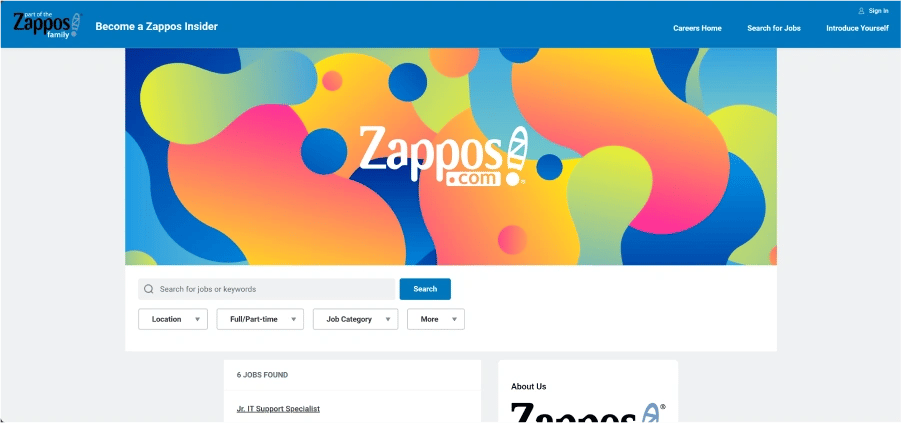
Source: Zappos
5. Employee Development and Career Advancement Programs
Commitment to employee growth and development can be part of employer branding efforts. Companies showcase their training programs, mentorship opportunities, and career advancement paths to demonstrate their investment in the professional growth of their employees. This approach appeals to job seekers who value personal and career development.
Amazon operates various employee training initiatives through the Amazon Technical Academy to equip non-technical employees for software engineering roles.
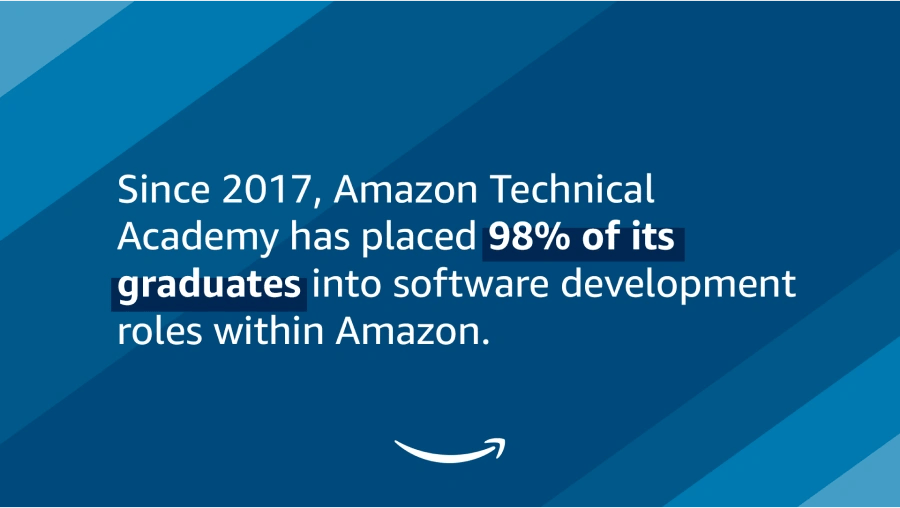
Source: Amazon
6. Employer Branding Workshops and Events
Another initiative is hosting workshops and events dedicated to employer branding. These events can include seminars on company culture, open houses, or participation in job fairs with a unique and branded approach.
For example, INBOUND is a conference hosted by HubSpot, designed as a networking and connection hub for business, marketing, and sales leaders.

Source: HubSpot
7. Inclusive and Diverse Workplace
Promoting a culture of diversity and inclusion has become a critical aspect of employer branding. Top companies often highlight their initiatives and policies that support diversity, equity, and inclusion. By doing so, they attract a more comprehensive range of job candidates and create a more dynamic and innovative work environment. This includes showcasing diverse employee groups, highlighting inclusive policies, and promoting a culture of acceptance and respect.
SDS Global Enterprises is a great example of a company who makes it a priority to offer its employees a diverse and inclusive work environment.

Source: LinkedIn
These best employer branding initiatives listed above blend naturally into the strategies employed by top employer branding companies. These initiatives help companies ensure their external brand image aligns with the internal employee experience by maintaining consistent messaging across all platforms.
This comprehensive approach enhances visibility, builds a dynamic and employee-centric workplace narrative, and sets these companies apart as leaders in employer branding.
Elevate Your Employer Brand With GaggleAMP
For businesses looking to revolutionize their approach to employer branding, GaggleAMP offers a proven solution. GaggleAMP can help elevate your employer branding to new heights by harnessing the power of employee advocacy and social media engagement.
Our platform is designed to help amplify your brand's presence, engage your employees, and showcase your company culture. Discover how GaggleAMP can transform your employer branding efforts and help you build a stronger, more attractive brand in the competitive job market.
Contact us today to schedule a demo!






